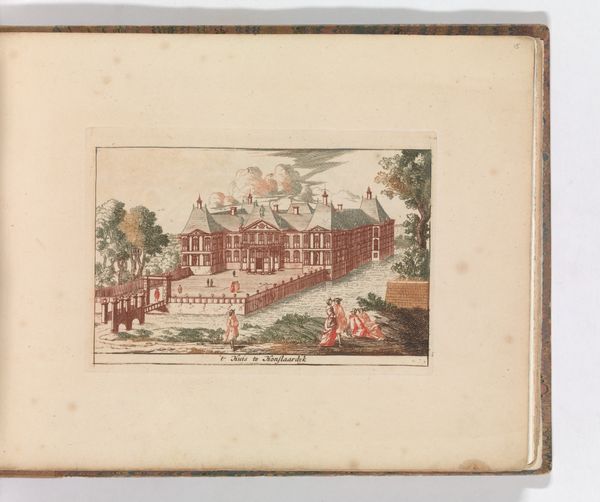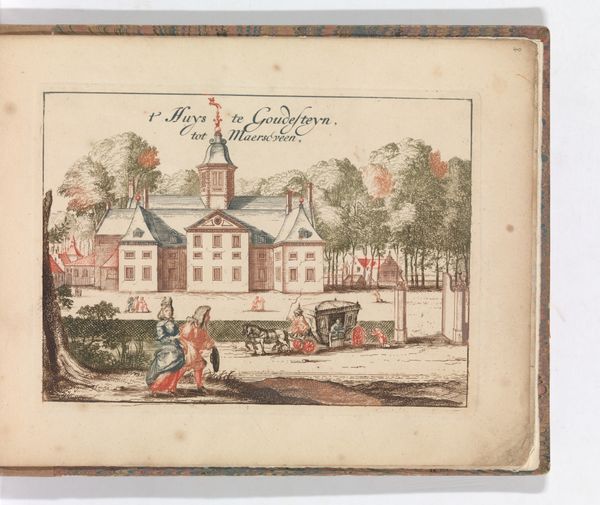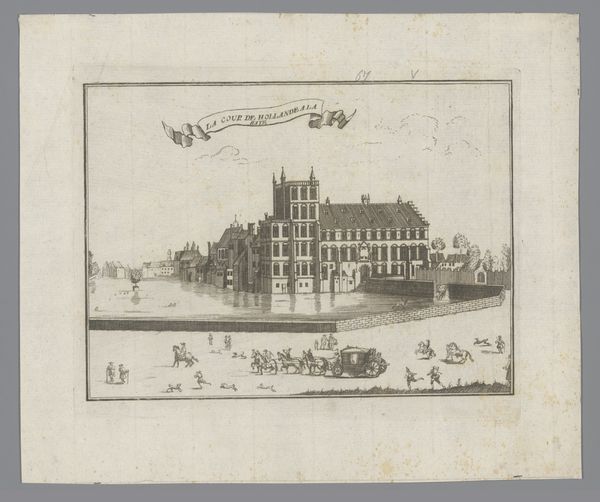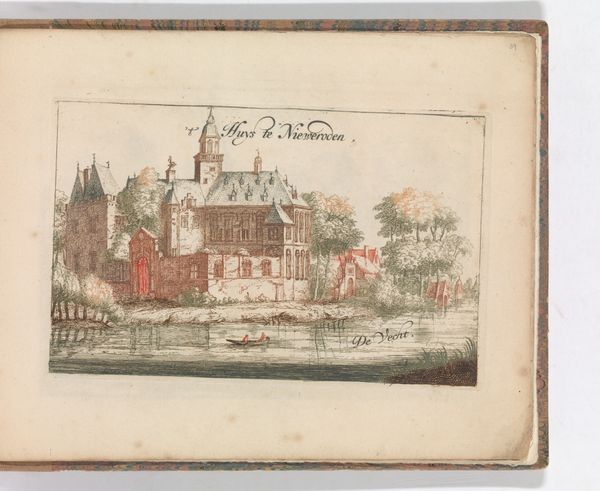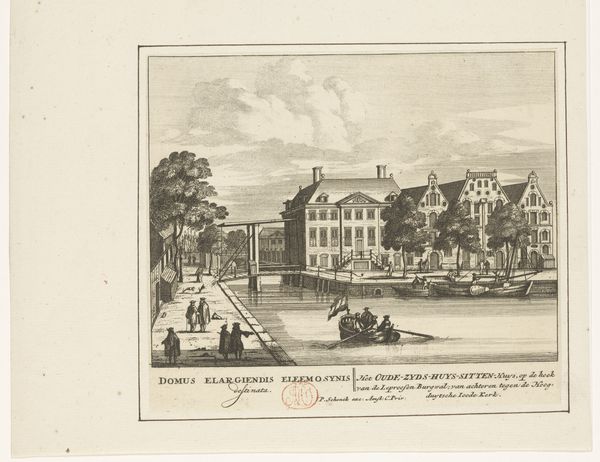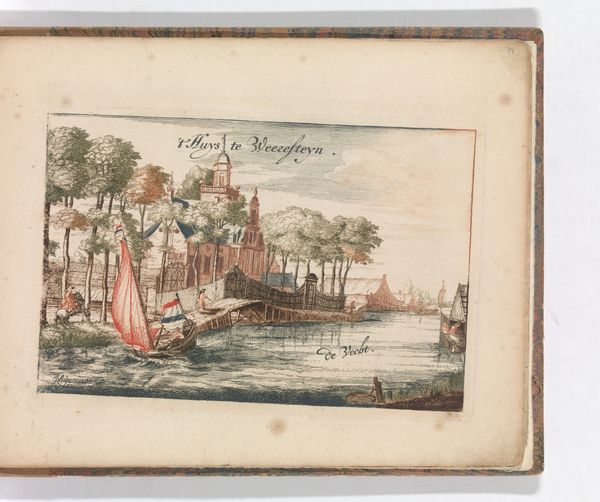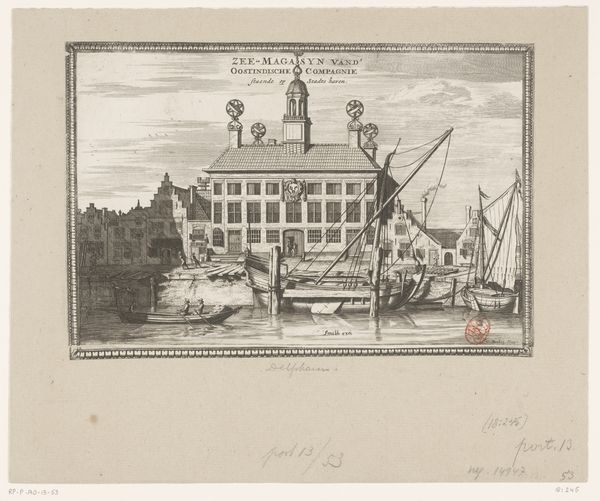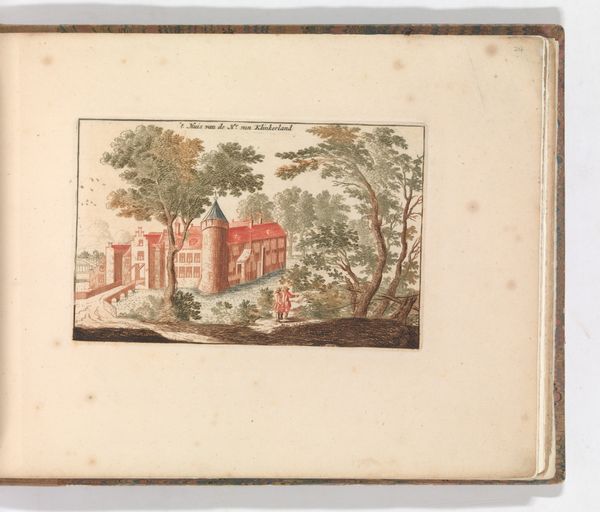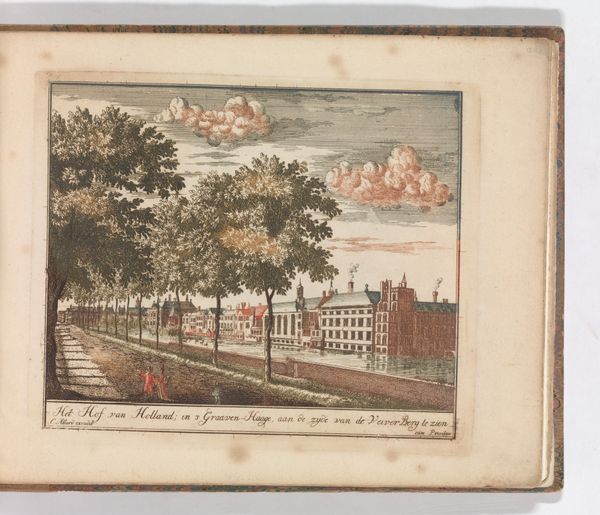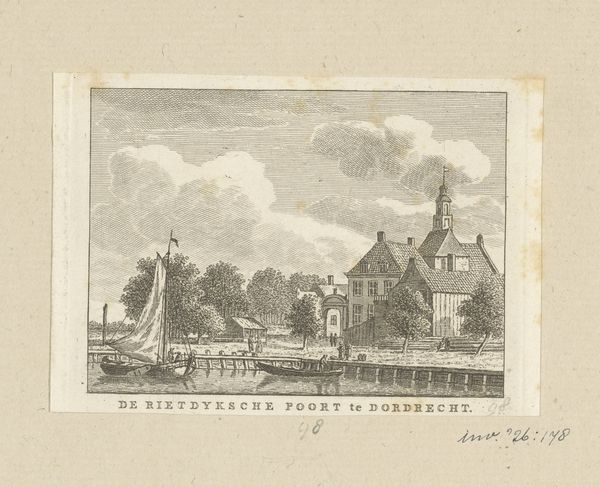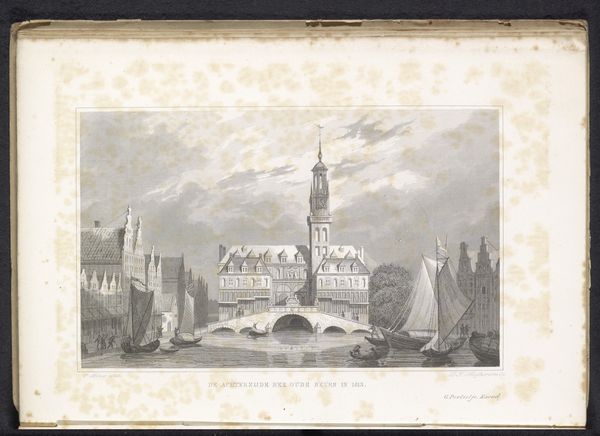
'Den Omval, den Amstel', in: Tooneel Der Voornaamste Nederlands Huizen, En Lust Hoven, Naar T Leven Afgebeeld 1660 - 1693
0:00
0:00
drawing, print, etching, watercolor
#
drawing
#
boat
#
baroque
#
dutch-golden-age
# print
#
etching
#
book
#
landscape
#
watercolor
#
coloured pencil
#
cityscape
#
building
Dimensions: Plate: 6 1/4 × 8 3/8 in. (15.9 × 21.2 cm)
Copyright: Public Domain
Curator: Today, we are looking at “Den Omval, den Amstel,” an etching and watercolor on paper by Carel Allard. It likely dates from between 1660 and 1693, placing it squarely within the Dutch Golden Age. Editor: It’s a fascinatingly constructed little world, isn't it? The balance between the almost cartoonish foreground figures and the rather stately home creates an appealing tension. Curator: Indeed. Look at the deliberate contrast between the bustling foreground figures and the stately home in the background, typical of Dutch Golden Age portrayals of prosperity and leisure. Note the symbolism inherent in depicting both the activity on the Amstel River—a key trade route—and the pleasure garden enjoyed by those residing in the home. These landscapes reflect not just topography but values. Editor: And it’s all very carefully calibrated. The diagonals formed by the river, the building, and even the figures create a visual harmony, almost a structural echo, emphasizing a sense of order and control so common in art from that period. Curator: Absolutely. There’s an intentional communication here, conveying wealth and stability. The house itself is an emblem, not just a dwelling. Consider how the smoke rising from the chimney may signal an ever-burning hearth, emblematic of prosperity. Editor: Do you think that small dog attempting to jump on the couple hints at something playful or a destabilizing disruption in such carefully composed idyll? Or, is it simply just an added point in the foreground? Curator: Intriguing! It possibly serves as a commentary on the human condition or a subtle hint that pleasure may be fleeting, depending on the viewer's cultural context. Remember, many Dutch Golden Age paintings embedded moral lessons within these genre scenes. Editor: Well, looking at it now, the overall design, particularly with those figures seemingly cut off, appears rather intentional and the composition takes on an almost cinematic quality, cropping the edges in ways that heighten the artifice, the 'constructedness', of the scene. Curator: A good observation. This has been a fruitful exploration indeed, providing some social and cultural context to these types of landscape prints that provide key visual imagery to life during the Dutch Golden Age. Editor: Indeed, the artwork’s design draws us into thinking deeply about its artful construction and inherent paradoxes of stillness, action, class and taste, that continue to stimulate even now.
Comments
No comments
Be the first to comment and join the conversation on the ultimate creative platform.

